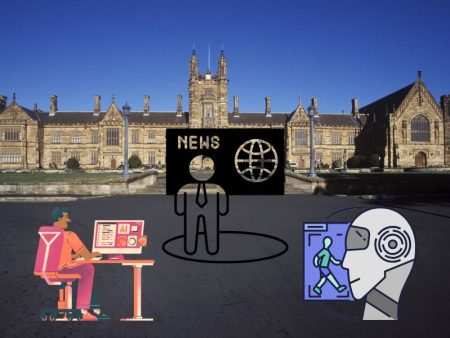Ever catch yourself staring at a stock chart, trying to make sense of that wild zigzag, only to end up with a forehead cramp and a faint sense of dread? Yep, I’ve been there too—scrolling through endless candlestick patterns at midnight, wondering if I’m missing the next big breakout or just setting myself up for another loss.
That’s where something interesting comes into play: AI-powered tools that analyze trades for you. Think of them as financial behind-the-scenes wizards, quietly crunching numbers while you focus on living your life (or, you know, sleeping).
In this post, we’re unpacking the mystery of AI stock trade analyzers. What are they? How do they work? And—most importantly—do you really need one?
The Genesis: What Exactly Is an AI Stock Trade Analyzer?
Alright, quick story: a couple of years ago, my cousin Jenna—she’s a teacher—decided to dabble in the stock market. She downloaded a random finance app, read a few how-to articles, and went in. Spoiler: she lost money. Not disastrously, but enough to feel discouraged.
Then she found an AI Stock Trading analyzer. Almost overnight, she went from guessing when to buy, to getting real-time suggestions on when to enter or exit a position. The tool didn’t replace her intuition—it shaped it.
Simply put: an AI stock trade analyzer uses machine learning (and sometimes deep learning) to process mountains of financial data—historical prices, volume changes, news sentiment, macro indicators—and spits out guidance like:
- “Consider buying XYZ because…”
- “Sell ABC now; risk is rising.”
- “Hold your position; momentum looks strong.”
It’s like having a tireless, hyper-analytical assistant helping you think through your trades.
How It Actually Works
You know how people say “garbage in, garbage out”? That’s real. But AI analyzers are scavengers—they dig through structured and unstructured data:
- Historical market data – Think prices back to 2000, intraday moves, volume, volatility.
- Fundamental data – Company earnings, revenue trends, economic releases.
- Alternative data – News articles, social media sentiment, insider trades.
- Macroeconomic stuff – Interest rates, unemployment numbers, inflation reports.
The AI identifies patterns—maybe when inflation hits a certain level, tech stocks dip, or when sentiment in SEC filings turns bullish—and then combines that with your strategy to make suggestions. You don’t need to understand the math; you just look at the output.
Meet Your Digital Colleague: The AI Stock Trading Bot App
Picture this: “Siri, check my stocks.” And she comes back with, “Hey, ABC is trending up. Would you like me to move your stop-loss?” That’s basically what an AI Stock Trading Bot App does—but smarter.
These apps often deal with real-time monitoring, stop-loss strategies, portfolio rebalancing, and even robo-advisory for either a single stock or whole portfolios. Some are hands-off; others let you customize risk levels, asset types, and even trading hours.
They’re not emotionless robots (okay, technically they are), but they are immune to fear, greed, FOMO, and other messy human emotions. That makes decisions smoother and, dare I say, sounder.
The Magic (and Misses) of Prediction: AI Stock Market Prediction Bot
Ah, the Holy Grail: predicting what’s going to happen.
Enter the AI Stock Market Prediction Bot—the flashy, high-tech dream of forecasting stocks with uncanny accuracy.
But let’s get real: markets are influenced by black swan events—a tweet, a political shift, a surprise earnings call. AI tries to dodge those, but sometimes it fails spectacularly.
Still, the best predictors follow probability, not certainties. They might say, “Based on current patterns, XYZ has a 65% chance to rise 5% in the next week.” That’s not prophecy, but it helps tilt the odds in your favor.
🗣️ “But Do I Need One?”—The Real Question
Here’s where you and I get real.
If you’re a casual investor—dabbling in ETFs or buying individual stocks for retirement—you might be fine with basic research and occasional alerts.
But if you’re actively trading—day trading, swing trading, managing multiple positions—these tools can save you from:
- Emotional mistakes (like holding on too long out of hope)
- Missed opportunities (not reacting to a sudden event)
- Cognitive overload (tracking 10+ stocks daily)
AI analyzers can be a massive force multiplier.
Okay, So Who Actually Uses These?
- Day traders juggling 20 stocks at once
- Swing traders scanning gap opportunities
- Portfolio managers automating rebalancing
- Financial advisors scaling their research
- Heck, even smart passive investors, who use AI to nudge portfolio tweaks
The Trade-Offs (There’s Always a Catch)
Tech is awesome—but nothing’s perfect. Here’s what to watch for:
- Overfitting risk: AI learns the past…but history doesn’t always repeat.
- Black-box mystery: Some tools can’t explain their reasoning.
- Data bias: If the training data misses a market trend, so does the AI.
- Cost: While some are free, high-tier services can be pricey.
So: you need to evaluate—do the benefits of automation and analysis outweigh the cost and opacity?
How to Choose (Without Overwhelming Anxiety)
Start small:
- Define goals: Are you looking to reduce risk, bump your success rate, or automate trades?
- Try a few: Free trials exist—test ’em.
- Check reputation: Read user reviews, look at sample outputs.
- Monitor results: Compare how AI guidance performs versus your own strategies.
I tested two over three months. One cut my bad trades in half. The other flopped. It just shows: not all AI tools are equal.
🧭 Real Talk: Blending AI With Your Experience
Here’s the sweet spot: Let AI handle the grunt work—screening, alerts, pattern spotting. And you:
- Use your gut when it matters (like breaking news, earnings surprises).
- Customize parameters based on your style: risk, timeframes, trade size.
- Keep learning—AI improves your discipline, and you improve the AI with feedback.
The Future: Is This Just the Beginning?
You bet. AI tools are getting:
- Smarter on multi-asset strategies
- Better at natural language context (asking questions, explaining decisions)
- Integrated with voice assistants—so “Hey Alexa, what should I do?” becomes real
💡 TL;DR (But You’ll Probably Go Deeper Anyway)
- AI analyzers combine real-time data and pattern recognition to advise trades
- AI Stock Trading tools cut emotional bias, save time, and help active traders
- AI Stock Trading Bot App takes intuition & trading execution to autopilot
- AI Stock Market Prediction Bot doesn’t predict the future—but tilts the odds
- Not a cure-all, but powerful when combined with your own experience
- Test, measure, iterate—go slowly, it’s your money
So… Do You Need One?
If you’re serious about trading—tracking multiple stocks and making frequent decisions—yes. These tools provide a leg up. But if you’re a casual investor focused on long-term savings, maybe not just yet.
That said, dipping a toe with a free analyzer can still inform your long-term investing, reduce stress, and polish your market instincts. What’s there to lose?
Your Move
Want to test-drive an analyzer? Want help picking tools that fit your level of experience and budget? Drop a comment with what you’re trading, what you’re hoping AI helps with—and I’ll point you toward what might work best.
Happy (and smarter) trading!


